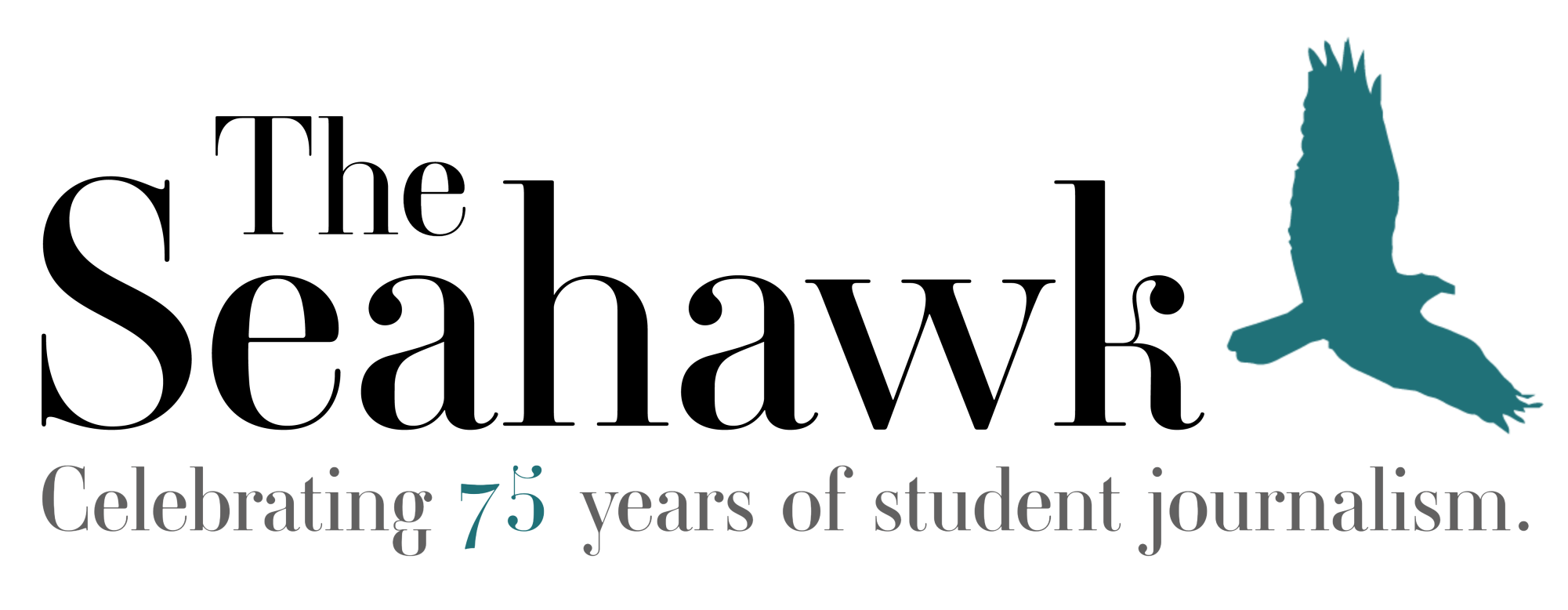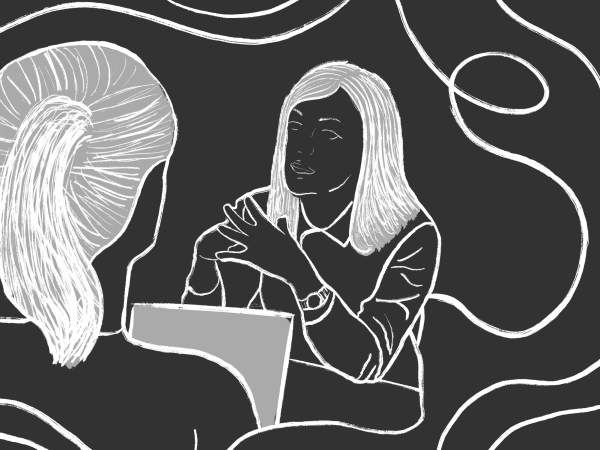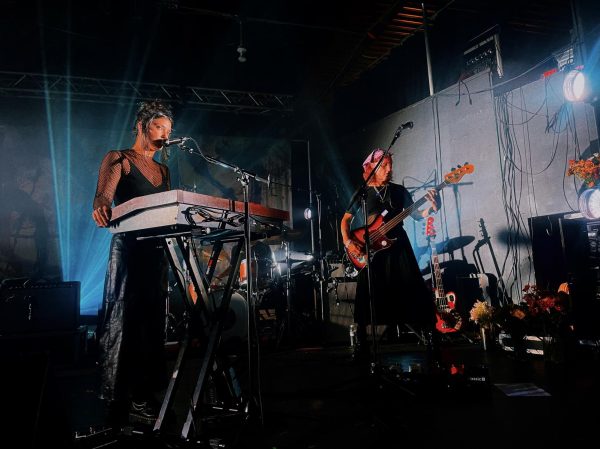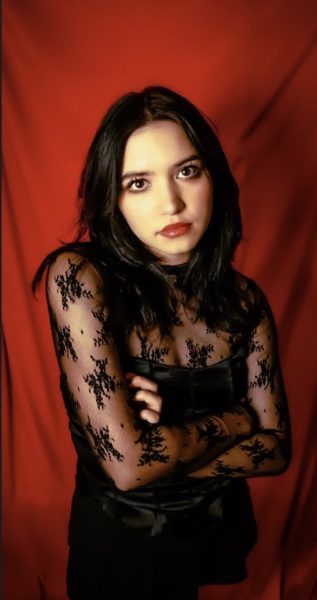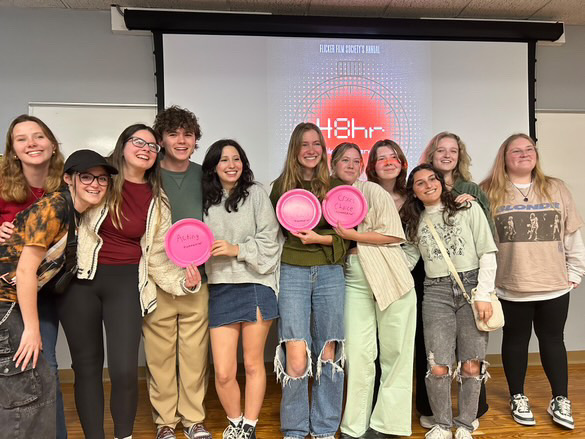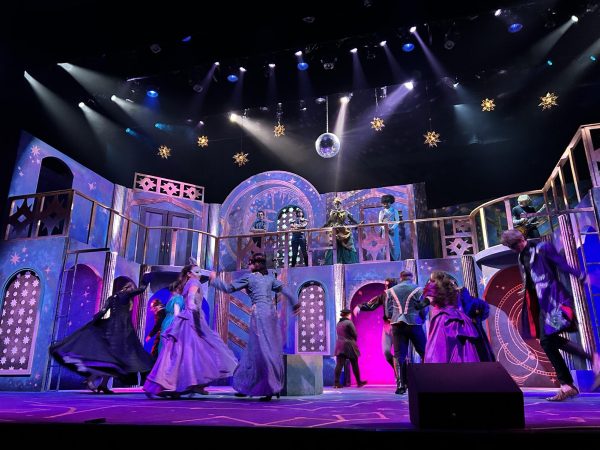UNCW theater brings postmodern vibe to Shakespeare’s “A Midsummer Night’s Dream”
A near-full audience waits as the lights dim and a blonde Ella Fitzgerald dressed in black begins to lip-synch a warped version of “Embraceable You.” A male counterpart does just that-embraces her as if he is holding his lover for the last time. Their bodies constantly touch, arms entangled, cheeks brushing, while images of a potter kneading clay play on a scrim in front of the actors, as well as on a screen behind them. So begins the UNCW theatre department’s production of “A Midsummer Night’s Dream.”
The sexual tension continues as the lighting changes to a posh red and reveals a lush, red velvet carpet on the lower level of stage. The couple moves forward and meets Theseus (Gary T. Moore) and Hippolyta (Katie Wesolowski), dressed in a white tuxedo and dress. The female fairy touches Hippolyta, groping her breasts at times, while the male fairy touches Theseus. Despite these distractions, the audience is expected to pay attention to the verse spoken by the actors and remember there’s a story being told. It could be easy to miss that Moore and Wesolowski are playing different characters from their later characters of Oberon and Titania, king and queen of the fairies.
“A Midsummer Night’s Dream” centers around three different plots: a love rectangle, the Fairy Court, and the Mechanicals (actors trying to perform a play). Disgruntled Egeus (Sloan Friedman) brings his love-struck daughter Hermia (Kelly Mis) to Theseus and demand she marries suitor Demetrius (Luke Robbins) or die. As ruler of Athens, Theseus agrees, and Hermia decides to run away with her lover, Lysander (Nicholas Reed). Jealous Helena (Haley Alber), who loves Demetrius, confronts Hermia when she learns of the plan. In an attempt to please Demetrius, Helena shares Hermia and Lysander’s plot, and he leaves to find Hermia. Helena follows, and the play shifts to the Mechanicals.
The Mechanicals enter to techno music, twitching, jumping, and swinging their bodies while doing so. We learn that they will perform a play that stars Bottom (Jake Steward) as the lead male, Pyramus. Bottom and director Quince (Richard Smith) repeat lines over and over creating confusion for themselves and comedy for the audience.
As the actors rehearse, nearby are the Fairies, including Eddie Ledford’s lounge-crooning and mischievous Puck, who hilariously dances to a jazz number for a good five minutes when he enters. Puck is Oberon’s right hand fairy, and obeys the king’s order to find a magical flower, which will make Titania fall in love with the first person or animal she sees.
The following scenes make good use of the scrim and screen. Images of the flower play as Titania, Lysander and Demetrius all receive the magic that causes them to fall in love with the next creature they see. And from there, romantic situations change, comedy ensues, and the audience forgets that they are seeing an outlandish version of Shakespeare’s play.
Andy Belser, director of the show and chair of the theatre department, has created a dream-like experience where music and images are just as much the characters as the actors are. The production is difficult to get into at first, but as the dream continues, the audience becomes entranced and agrees to go along for the ride. At the last scene, the screen and scrim are lifted, revealing the back of the theatre. The audience is jarred out of the dream-like state. However, Ledford’s last monologue brings it all back for an overall enjoyable performance.
“A Midsummer Night’s Dream” runs Feb. 14-17 and 21-24, at 8 p.m. and on Sundays at 2p.m. in the Main Stage Theatre of the Cultural Arts Building. Tickets are $12 for the general public, $10 for faculty and $5 for students.

